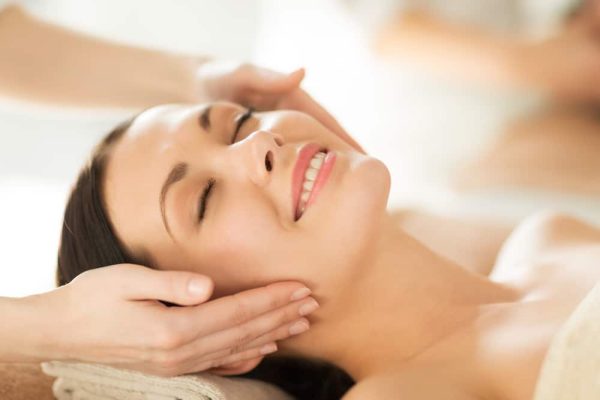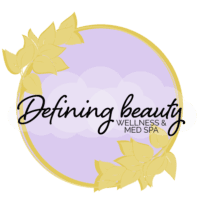
Cleanse and Exfoliate
We all want perfect, glowing, flawless skin, but achieving it can be a challenge. Cleanse and exfoliate are two crucial steps in any skincare routine, but it’s important to do them correctly in order to see real results.
In this post, we’ll go over the importance of cleansing and exfoliating, the dos and don’ts of exfoliating, when to trust your own skincare routine, and when to seek expert help.
The Importance of Cleansing and Exfoliating for Flawless Skin
Good skincare starts with a clean slate. Cleansing is essential for removing dirt, oil, and makeup that can clog pores and lead to breakouts. But cleansing alone isn’t enough to achieve flawless skin. That’s where exfoliating comes in.
Exfoliating helps to unclog pores and remove dead skin cells, revealing smoother, more radiant skin. Plus, it can help to improve the overall health of your skin by allowing your other skincare products to penetrate more effectively.
But with so many exfoliating products on the market, it can be overwhelming to know which one is right for you. That’s why we’re here to help. You can reach out to us at Defining Beauty Med Spa to experience the ultimate pampering and nourishment with our signature facials.
Why Cleansing Alone Isn’t Enough: The Benefits of Facials
Facial exfoliation or facials is an important part of maintaining healthy skin. There are two main types of exfoliants: physical and chemical.
Physical exfoliants, such as scrubs and brushes, use small particles to remove dead skin cells, while chemical exfoliants, like alpha hydroxy acids (AHAs) and beta hydroxy acids (BHAs), use ingredients that dissolve the bonds between dead skin cells, making them easier to remove.
Using both types of exfoliants can help to deeply cleanse and rejuvenate the skin, but it’s important to use them properly to avoid over-exfoliating and causing harm to the skin.
DIY vs. Professional: When to Trust Your Own Skincare Routine and When to Seek Expert Help
Skincare can be a DIY affair, and there are plenty of great products on the market that can help you achieve beautiful skin at home. But sometimes, it is helpful to seek the guidance of a skincare professional.
There are several benefits to doing your own skincare at home. It’s generally more cost-effective and convenient, and you have the freedom to customize your routine to your specific needs.
However, there are certain situations where DIY facials should be avoided by all means. It’s important to seek the help of a professional. For example, if you have a specific skin concern like acne or rosacea, a skincare professional can provide personalized recommendations and treatments that may not be available over the counter.
They can also offer advanced techniques like chemical peels and microdermabrasion that can provide deeper exfoliation and faster results.
How to Incorporate Cleansing and Exfoliating into Your Skincare Routine: A Step-by-Step Guide
Cleansing and exfoliating are essential steps in any skincare routine, including facials. These practices help to remove impurities, dirt, oil, and makeup that can clog pores, as well as dead skin cells that can make your skin look dull.
By incorporating these steps into your skincare routine, you can achieve smoother, brighter, and healthier-looking skin. Before starting a skincare routine, it’s important to begin with a clean canvas.
This means removing all dirt, oil, and makeup from your skin. Cleansing is crucial for maintaining the health of your skin and preventing breakouts.
There are many different types of cleansers available, so it’s important to choose one that is suitable for your skin type. For example, if you have oily or acne-prone skin, a foaming or gel cleanser that controls excess oil may be suitable.
If you have dry or sensitive skin, a cream or oil cleanser that is more nourishing and gentler may be a better choice.
Elevate your skincare routine with our professional facials and see the difference for yourself.
The Right Way to Exfoliate
Follow these simple steps to exfoliate your skin:
-
- Wet your face with lukewarm water
-
- Apply a small amount of exfoliant to your fingertips
-
- Gently massage the exfoliant into your skin using circular motions
-
- Use a gentle touch and avoid applying too much pressure to avoid irritation
-
- Rinse thoroughly with lukewarm water
-
- Pat your skin dry with a clean towel
Tips For Layering
Once you’ve cleansed and exfoliated your skin, it’s time to apply any additional skincare products. These can include toners, serums, and treatments that target specific concerns like acne, dark spots, or fine lines.
When layering skincare products, it’s important to apply them in the correct order to maximize their effectiveness. Generally, you want to start with the lightest products and work your way up to the heaviest.
This allows the lighter products to penetrate deeper into your skin and helps to lock in the moisture from the heavier products.
Here’s a general guideline for layering skincare products:
-
- Cleanser: Remove dirt, oil, and makeup
-
- Toner: Balance pH and remove any remaining impurities
-
- Serum: Deliver targeted treatment for specific concerns
-
- Eye cream: Nourish and protect the delicate skin around the eyes
-
- Moisturizer: Hydrate and protect the skin
-
- Sunscreen (during the day): Protect the skin from UV rays
Of course, everyone’s skincare routine is different, and you may not need to use all of these products. The important thing is to choose products that are suitable for your skin type and concerns and to apply them in the correct order.
Bonus Tips for Maintaining a Consistent Skincare Routine and Troubleshooting Common Issues
Maintaining a consistent skincare routine is the key to achieving and maintaining healthy, glowing skin. This means cleansing, exfoliating, and moisturizing at the same time each day, and using products that are suitable for your skin type and concerns.
If you’re having trouble with your skincare routine or you’re experiencing specific skin concerns, there are a few things you can try:
-
- Seek the guidance of a skincare professional
A professional can provide personalized recommendations and treatments that may not be available over the counter. They can also offer advanced techniques like chemical peels and facials that can provide deeper exfoliation and faster results.
-
- Experiment with different products
There are so many skincare products on the market, and what works for one person may not work for another. If you’re not seeing the results you want, try experimenting with different products until you find the ones that work best for your skin.
Transform Your Skin with Our Customized Facials and Expert Skincare Treatments
Good skincare takes time. It may take several weeks or even months to see noticeable improvements in your skin. Don’t give up too soon, and be consistent with your skincare routine.
Hopefully, this guide has been helpful in showing you how to incorporate cleansing and exfoliating into your skincare routine. With professional facials, the right products, and a consistent routine, you can achieve smoother, brighter, and healthier-looking skin.https://definingbeautymedspa.com/skin-care/

